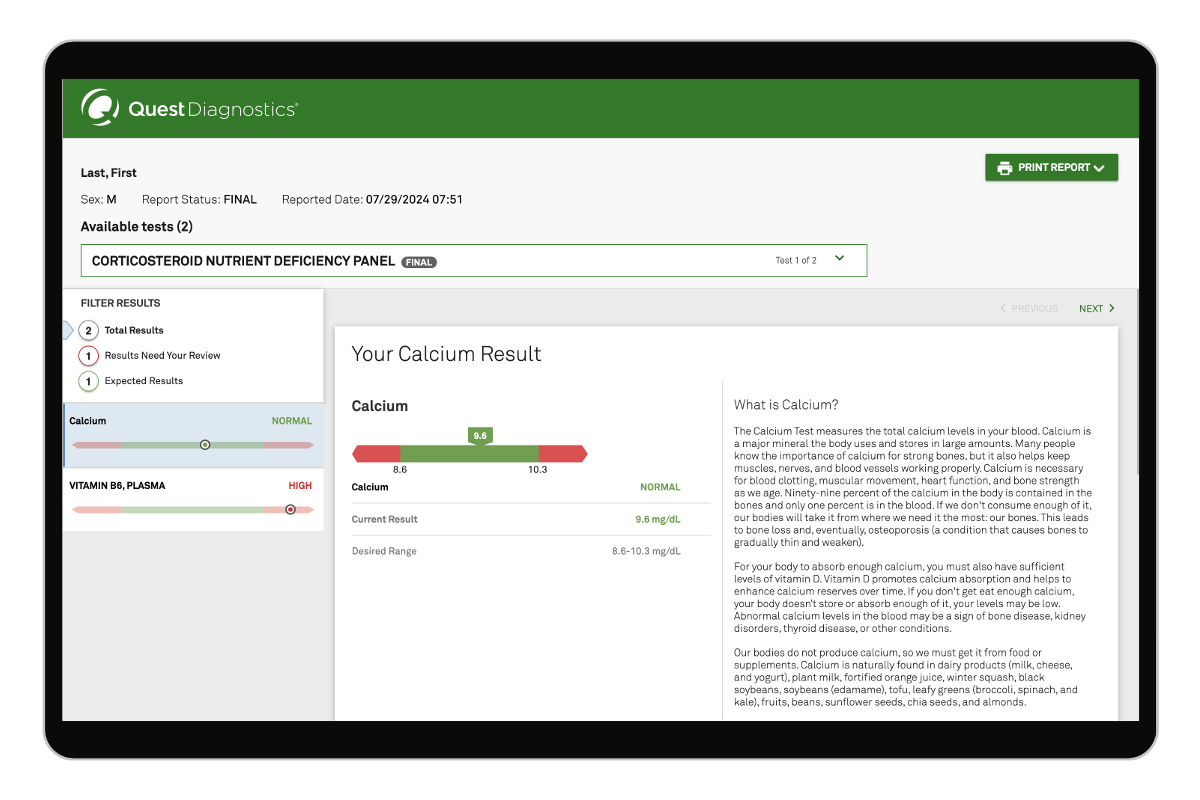Nutrient Deficiency Test Panel for Corticosteroid Patients
Corticosteroids may make it difficult to get the nutrients your body needs. Measure the levels of 2 nutrients in your blood that research has shown can be affected by corticosteroids. Read moreThe Nutrient Deficiency Panel for Corticosteroid Patients measures the levels of the following 2 nutrients in your blood: vitamin B6 (pyridoxine) and calcium.
Identifying and addressing nutrient deficiencies are important steps toward better health. Your body does not produce most vitamins and minerals, so you must get them from food or supplements. How nutrients work in your body is influenced by more than just what you eat. These factors include genetics, age, health conditions, medications, metabolism, and how well your body absorbs nutrients.
Corticosteroids may make it difficult to get the nutrients your body needs. Having these nutrients tested helps you and your doctor decide if you need to supplement with additional vitamins or minerals.
How it works
questhealth.com offers 100+ consumer-initiated Quest Diagnostics lab tests to empower you to have more control over your health journey. Choose from a variety of test types that best suit your needs.
Water-soluble and fat-soluble vitamins differ in how they are absorbed by the human body.
A water-soluble vitamin dissolves in water and is easily absorbed by the body. Your body does not store these vitamins for long, so any extra will be eliminated in your urine. Because of this, it's important to consume them every day.
A fat-soluble vitamin dissolves in fats and oils and is absorbed with the fats you eat. Your body stores any extra in your liver or fatty tissues. Because of this, you don't need to consume them every day.
- Hwang C, Ross V, Mahadevan U. Micronutrient deficiencies in inflammatory bowel disease: From A to zinc. Inflammatory Bowel Diseases. 2012;18(10):1961-1981. doi:10.1002/ibd.22906
- Gennari C. Differential effect of glucocorticoids on calcium absorption and bone mass. Rheumatology. 1993;32(suppl 2):11-14. doi:10.1093/rheumatology/32.suppl_2.11


